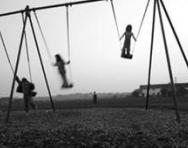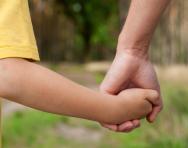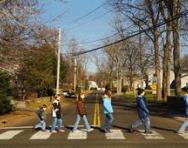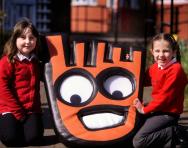Child safety: stranger danger

It’s natural to want to protect our children from danger. However, experts have begun to suggest that by restricting children's experience of the world, and denying them the independence to make mistakes and learn from them, we are leaving children ill-prepared for the trials they will face as adults. The charity Missing People even suspects that some children may run away in order to experience the kind of independence they are denied at home.


Start a unique learning programme!
- Weekly programme for each school year
- Worksheets sent direct to your inbox
- Keeps your child's learning on track
Stranger danger
Many parents biggest fear is stranger abduction. That’s unsurprising with high profile cases covered in the media, such as Shannon Matthews, Madelaine McCann and James Bulger. But we need to remain grounded – these cases are rare.
“Children should be able to run around and fall down and learn,” says the founder and president of PACT (Parents and Abducted Children Together) Lady Catherine Meyer.
But she advises we need to teach children stranger awareness: “It seems as though we do live in a more dangerous world and there is a natural reaction of parents to protect.”
A new approach to stranger awareness
The Safer Strangers, Safer Buildings campaign teaches children how to take responsibility for their own safety, should they get lost or feel unsafe. It helps children learn about the kind of strangers who are safe for them to speak to should they find themselves in a difficult situation, and the buildings they can go into if they need help.
Rather than scaring children it equips them with the skills they need to stay safe.
Three key points in the Safer Strangers, Safer Buildings safety code:
- A safer stranger is a person who is working at a job which helps people. Safer strangers will usually be wearing a uniform. Safer strangers could be police officers, traffic wardens, shopkeepers, check-out assistants, and others.
- Safer buildings could be banks, post offices, libraries, medical centres, shops, supermarkets, leisure centres, and others.
- If you get lost, or feel unsafe, and there is no adult around that you know and trust, look for a safer stranger who you can ask for help. If you can't see a safer stranger outside, look for a safer building you can go into, to ask for help from the people who work there.
How you can help your child to stay safe
- Make sure your child knows their phone number and address. You could give them a card to keep in their pocket with these details on.
- You should always try to keep your children within eyesight, or ensure that they are with another responsible adult.
- Children need to understand that they should never go off with someone without telling you first.
- Go through the Safer Strangers, Safer Buildings code with your children. Remember not to scare them but to help them learn in a positive and relaxed way.
- Make sure your children are familiar with the local area by taking them on casual walkabouts. Point out safe buildings that they could go into, or local members of the community they could speak to if they needed help.
- Older children should be taught to stay aware of their surroundings, keep iPods at a low level and stick to busy, well-lit areas, avoiding shortcuts.

Give your child a headstart
- FREE articles & expert information
- FREE resources & activities
- FREE homework help








